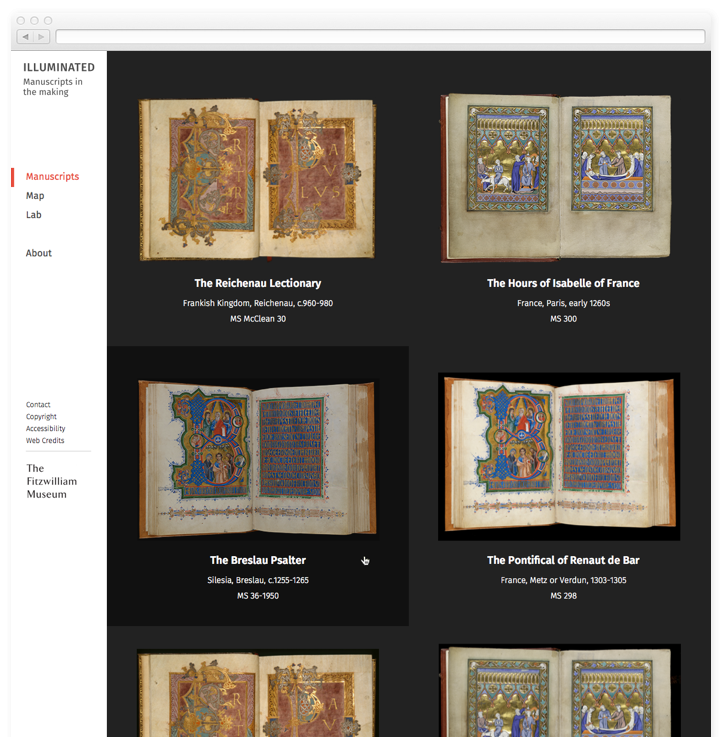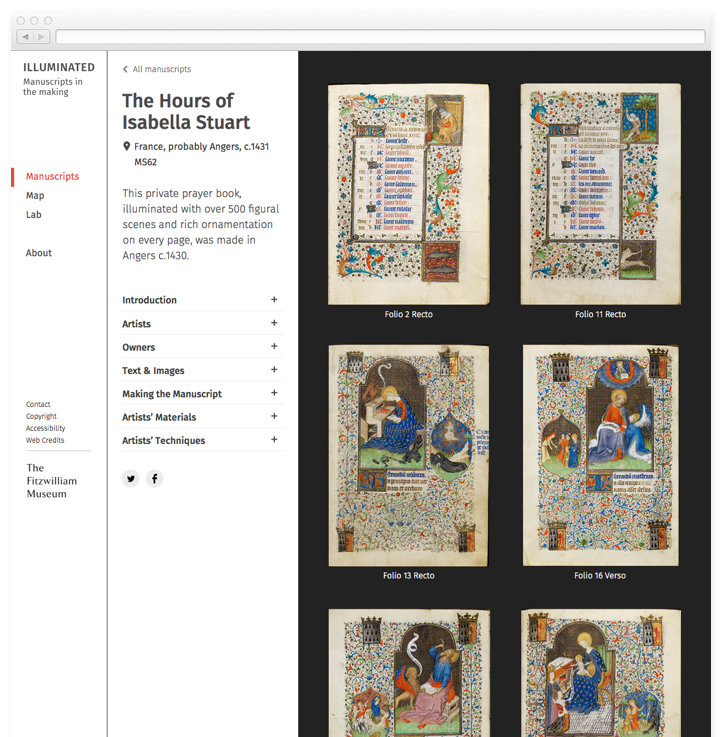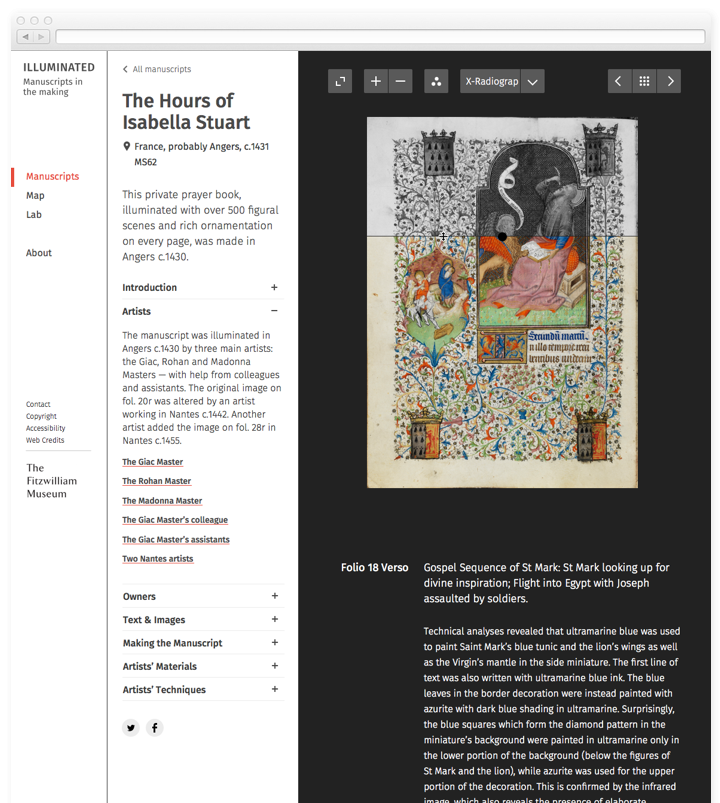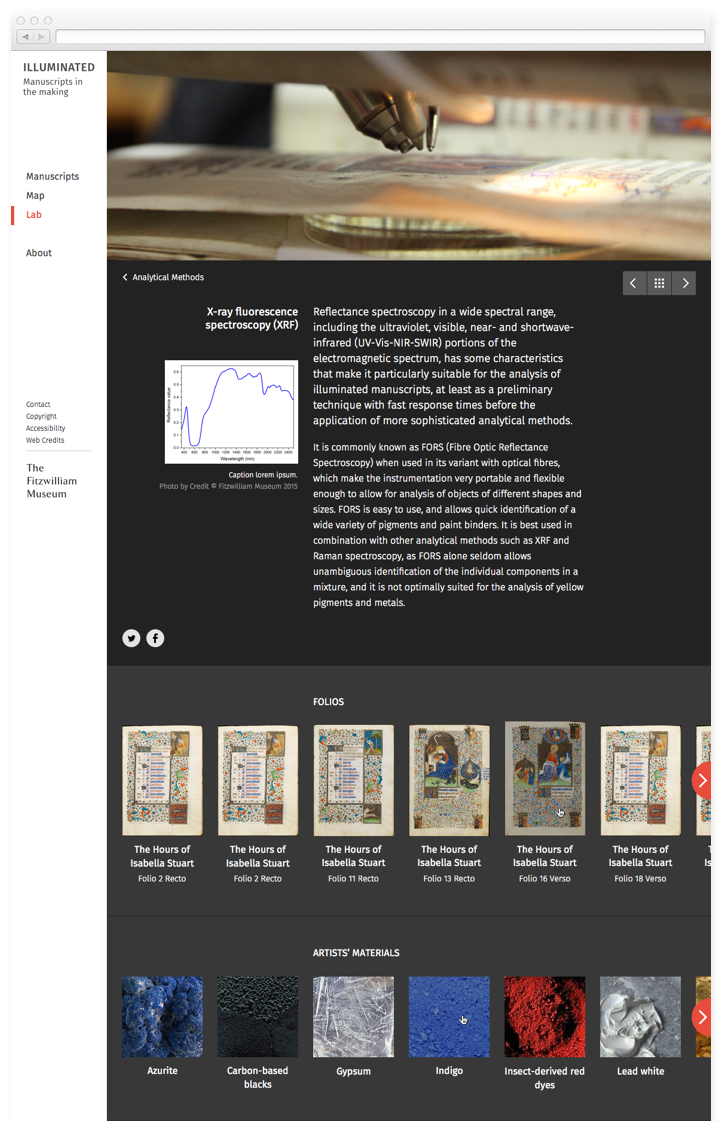Illuminated Manuscripts
The Fitzwilliam museum asked Keepthinking to lead their project for the Illuminated Manuscripts digital platform. The website invites you to view multiple images within each manuscript, zoom in on details, discover drawings hidden beneath the painted surfaces, learn about the pigments and the advanced scientific methods used for their identification, and explore the relationships between scribes, artists and original owners.






